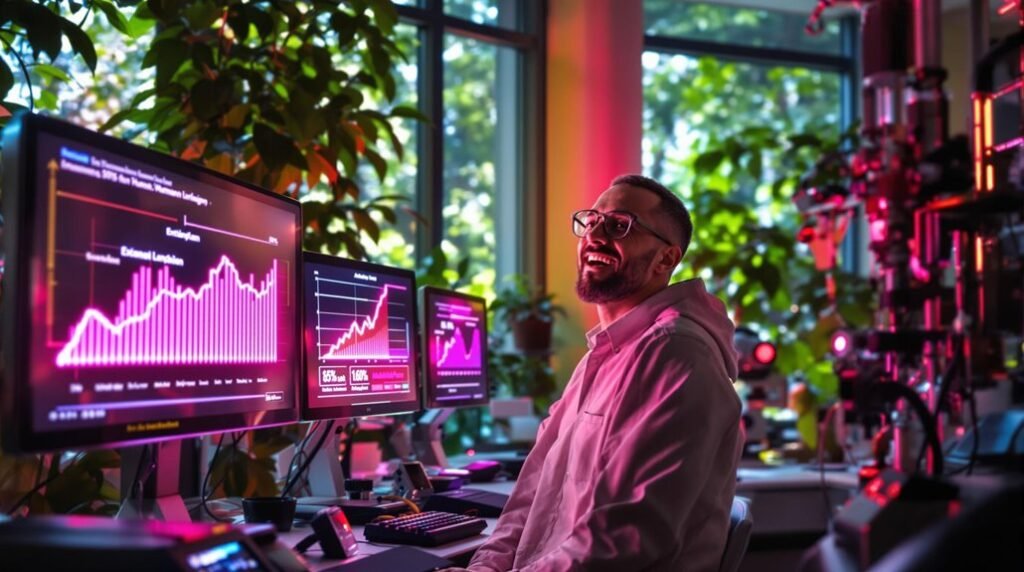You're witnessing a remarkable prediction from Anthropic's CEO about AI's impact on longevity. Through groundbreaking developments in drug discovery, biomarker research, and personalized medicine, AI could double human lifespans within our lifetime. The technology's ability to analyze vast biological databases and accelerate research timelines from decades to years makes this ambitious goal possible. The journey toward extended human life through AI innovation has only begun to unfold.
As scientists race to reveal the secrets of aging, artificial intelligence is emerging as a game-changing force in extending human lifespan. Through revolutionary advances in biomarker discovery and drug development, AI systems are now capable of condensing a century's worth of biological research into just five to ten years. You'll witness how these technological breakthroughs are transforming the way we comprehend and combat aging, potentially doubling human lifespans in the process.
AI's impact on drug discovery has been particularly striking, as it's dramatically reducing the time needed to identify promising therapeutic compounds. What once took years can now be accomplished in months, as machine learning algorithms sift through vast databases to pinpoint potential treatments. You're seeing this acceleration especially in the development of senolytic compounds, which target aging cells and could help extend your healthspan considerably. The latest research emphasizes a shift towards preventive healthcare approaches rather than reactive treatments, which aligns with the advancements in operational AI in managing data-driven decision-making in healthcare. With machine learning providing insights into vast amounts of biological data, the optimization of drug design is becoming more precise and effective than ever, leading to enhanced writing improvement in healthcare communication. Additionally, AI automates back-office activities within the healthcare sector, improving resource utilization and support services.
The integration of AI with biomarker research is revolutionizing how you can track and predict aging processes. Advanced algorithms are now identifying novel aging indicators, such as nuclear morphology, while analyzing complex combinations of biomarkers from multiple 'omic' technologies. This means you'll be able to detect potential health issues long before they become serious problems, shifting healthcare from reactive treatment to proactive prevention. Furthermore, AI's ability to analyze patterns in large datasets allows for earlier interventions and tailored healthcare strategies.
You'll find that AI isn't just speeding up research – it's fundamentally changing how we approach longevity medicine. By combining AI with emerging technologies like single-cell sequencing, scientists are developing personalized prevention and treatment plans based on your individual health needs. These AI-powered tools are becoming sophisticated enough to match the capabilities of Ph.D.-level researchers in fields like mathematics, programming, and biology.
However, you should know that there are still hurdles to overcome. While AI can accelerate research and discovery, regulatory approvals and clinical trials remain essential steps before these innovations reach the public. Physical world challenges and institutional bureaucracies continue to slow the pace of advancement, and further investment is needed to make these AI-driven approaches more accessible and accurate. The necessity for robust data governance is increasingly critical to navigate the complexities associated with deploying AI in clinical settings.
The future of longevity research looks promising as AI continues to decode the genetic and epigenetic factors associated with aging. You're witnessing the dawn of an era where AI-powered advances could become a standard part of healthcare, helping maintain your energy and well-being as you age. With continued development and integration of these technologies, you might soon see unprecedented extensions in human healthspan, making the dream of doubled lifespans a tangible reality.

